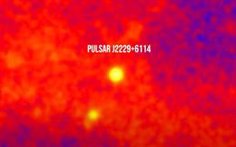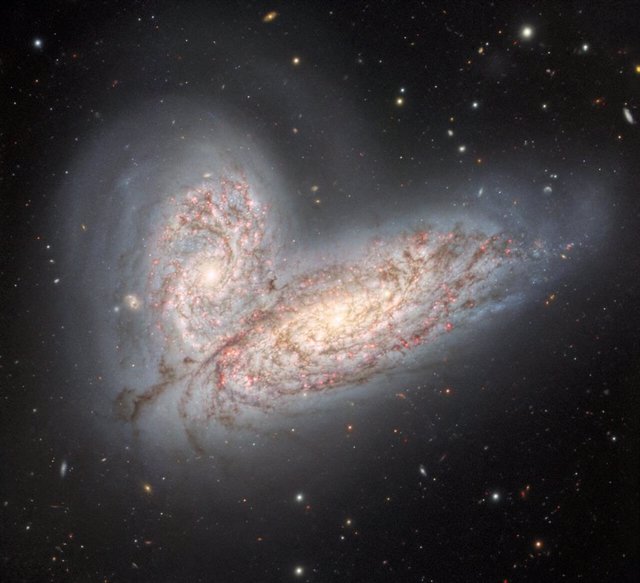The Merging Galaxy Pair NGC 4568 and NGC 4567 – INTERNATIONAL GEMINI OBSERVATORY/NOIRLAB/NSF/AURA
Aug. 12 () –
This cosmic merger is a foretaste of what will happen when the Milky Way and its nearest large galactic neighbor, the Andromeda Galaxy, collide in about 5 billion years.
The haunting image was captured by the Gemini North telescope in Hawaii and reveals a pair of interacting spiral galaxies, NGC 4568 and NGC 4567, when they begin to collide and merge.
These galaxies are entangled by their mutual gravitational field and will eventually combine to form a single elliptical galaxy in around 500 million years. Also seen in the image are the bright remnants of a supernova that was detected in 2020.
Gemini North, one of the twin telescopes of the Gemini International Observatory, has observed the initial stages of this cosmic collision approximately 60 million light-years away in the direction of the constellation Virgo.
The two majestic spiral galaxies, NGC 4568 (bottom) and NGC 4567 (top), are about to undergo one of the most spectacular events in the Universe, a galactic merger. Today, the centers of these galaxies are still 20,000 light-years apart (about the distance between Earth and the center of the Milky Way), and each galaxy still retains its original pinwheel shape. Those placid conditions, however, will change, explains in a statement NOIRLabwhich operates the Gemini telescope.

As NGC 4568 and NGC 4567 come together and merge, their dueling gravitational forces will unleash bursts of intense star formation and wildly distort their once-majestic structures. Over millions of years, the galaxies will repeatedly pass each other in ever tighter loops, drawing in long streams of stars and gas until their individual structures merge so completely that a single, essentially spherical galaxy emerges from the chaos. By that time, much of the gas and dust (the fuel for star formation) in this system will have been used up or removed.
This merger is also a foretaste of what will happen when the Milky Way and its nearest large galactic neighbor, the Andromeda Galaxy, collide in about 5 billion years.
A bright region at the center of one of NGC 4568’s sweeping spiral arms is the afterglow of a fading supernova, known as SN 2020fqv, that was detected in 2020. The new Gemini image was produced from data taken in 2020.
By combining decades of observations and computer modelling, astronomers now have convincing evidence that merged spiral galaxies like these turn into elliptical galaxies. NGC 4568 and NGC 4567 are likely to eventually resemble their more mature neighbor Messier 89, an elliptical galaxy that also resides in the Virgo Cluster. With its dearth of star-forming gas, Messier 89 now exhibits minimal star formation and is composed primarily of older, low-mass stars and ancient globular clusters.
















Add Comment